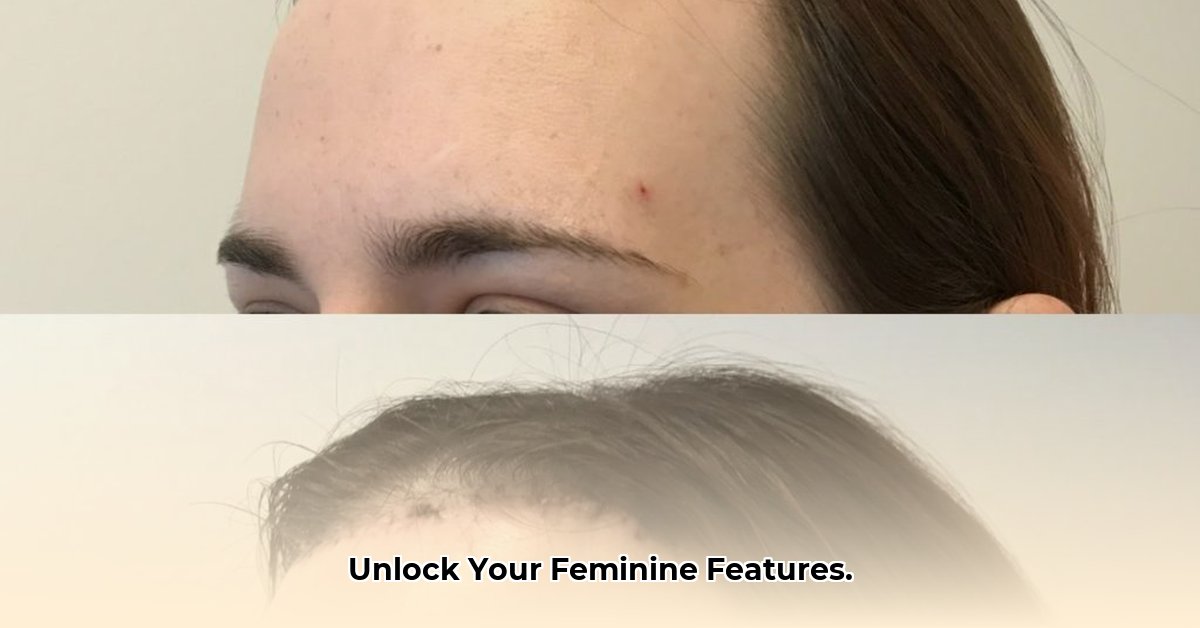Thinking about Facial Feminization Surgery (FFS)? This comprehensive guide showcases real FFS before-and-after photos and provides essential information. We will explore the various procedures involved, what to anticipate during recovery, and provide guidance on selecting the most suitable surgeon for your specific needs. Recognizing the significance of this decision, we aim to empower you with a thorough understanding of the process, realistic expectations, and unwavering confidence throughout your journey. Additionally, we’ll provide valuable tips for planning and sustaining long-term results. Let’s delve into how FFS can assist you in achieving your desired aesthetic and aligning your outer appearance with your inner self. For more on facial enhancements, see these filler before & afters.
FFS Before and After: Your Comprehensive Guide to Facial Feminization Surgery
Considering facial feminization surgery (FFS)? This comprehensive guide is designed to provide you with a thorough understanding of the process, covering everything from the specific procedures involved to the critical steps in finding the right surgeon to help you achieve your individual goals. Delve into the complexities of feminization surgery and discover how it can positively impact your life.
Understanding Facial Feminization Surgery: A Holistic Approach
Facial feminization surgery is not a single surgery; rather, it is a personalized combination of surgical techniques specifically tailored to create a more feminine facial appearance. Many individuals pursue FFS as an integral part of their gender affirmation journey. It’s a significant decision that warrants careful consideration and meticulous planning. Let’s explore the intricacies of this journey and understand the vital role that gender affirmation plays in the overall process.
The Core Procedures of FFS: A Detailed Overview
Your FFS plan may encompass a variety of procedures, with the precise combination depending on your unique facial features and desired outcomes. A skilled and experienced surgeon will collaborate with you to develop a personalized plan that is ideally suited to your needs and aspirations. Here’s a detailed overview of some common procedures:
- Forehead Contouring (Brow Bone Reduction): This procedure focuses on reshaping the forehead, typically involving the reduction or recontouring of the brow ridge and forehead bone. The aim is to create a smoother, more delicate, and feminine curve. Before-and-after photos frequently highlight the significant impact this procedure can have on the overall facial contour. In some cases, a brow lift is performed in conjunction with forehead contouring to elevate the eyebrows to a more feminine position.
- Rhinoplasty (Nose Reshaping): Rhinoplasty is performed to reshape the nose, aiming for a smaller, more refined appearance that complements a feminine facial structure. This procedure can involve reducing the overall size of the nose, refining the nasal tip, and smoothing out any dorsal humps. Rhinoplasty can significantly contribute to the overall feminine aesthetic.
- Genioplasty (Chin and Jaw Contouring): Genioplasty involves reshaping the chin and jawline to create a more delicate and feminine appearance. This may involve reducing the size of a prominent chin, narrowing the jawline, or subtly reshaping these features to achieve greater balance and harmony with other facial features. Before-and-after pictures often demonstrate the striking impact of these procedures.
- Lip Augmentation and Lip Lift: Lip enhancement procedures, such as lip augmentation and lip lifts, can enhance lip fullness and definition. Lip augmentation typically involves the use of fillers to add volume to the lips, while a lip lift can elevate the upper lip, creating a more defined cupid’s bow and exposing more of the upper teeth. These procedures contribute to a more youthful and feminine appearance.
- Cheek Augmentation: Cheek augmentation involves enhancing the cheekbones to create a more defined and feminine facial structure. This can be achieved through the use of implants or fat grafting to add volume to the cheekbones, creating a more sculpted and youthful appearance.
- Adam’s Apple Reduction (Tracheal Shave): Tracheal shave is a common procedure that reduces the prominence of the Adam’s apple, a feature often associated with masculinity. This procedure involves carefully shaving down the thyroid cartilage to create a smoother and more feminine neckline.
It’s essential to emphasize that FFS is not a standardized, one-size-fits-all approach. Your surgeon will conduct a thorough assessment of your facial structure, taking into account your personal goals and desires. Based on this assessment, they will develop a customized surgical plan that is tailored to your specific needs and will help you achieve your desired outcome. What questions should you ask your surgeon about the proposed procedures?
Understanding the Risks and Potential Complications
While FFS is generally considered safe when performed by a qualified and experienced surgeon, it is important to be aware that, like any surgical procedure, it carries certain risks and potential complications. Before making a decision, it is crucial to have a comprehensive understanding of these possibilities. Common potential complications include:
- Swelling and Bruising: Swelling and bruising are very common after any facial surgery. The extent of these effects will vary depending on the specific procedures performed and individual healing rates.
- Infection: As with any surgical procedure, there is a risk of infection. Infections following FFS are typically managed with antibiotics.
- Nerve Damage: Nerve damage is a potential risk, particularly in procedures involving the facial nerves. While nerve damage is often temporary, it can, in rare cases, be permanent. Your surgeon will take meticulous care to minimize this risk.
- Asymmetry: Minor asymmetries can sometimes occur following FFS, even with the most skilled surgeons. While surgeons strive for the best possible symmetry, subtle differences may still be noticeable.
- Scarring: Scarring is an inherent part of any surgical procedure. While surgeons make every effort to minimize scarring, some visible scars may remain.
- Changes in Sensation: Changes in skin sensation, such as numbness or tingling, are common after FFS. These changes are usually temporary, but can, in some cases, be permanent.
- Long-Term Issues: While long-term complications are relatively rare, they can occur. Possible long-term complications are typically discussed in detail during the consultation process.
Here’s a detailed table summarizing the potential risks associated with various FFS procedures:
| Procedure | Swelling/Bruising Risk | Infection Risk | Nerve Damage Risk | Asymmetry Risk | Scarring Risk | Sensation Changes | Long-Term Risk |
|---|---|---|---|---|---|---|---|
| Forehead Contouring | High | Moderate | Low | Moderate | Low | Moderate | Low |
| Rhinoplasty | Moderate | Moderate | Low | Low | Moderate | Moderate | Low |
| Chin Contouring | Moderate | Moderate | Low | Low | Low | Low | Low |
| Lip Lift | Low | Low | Very Low | Low | Low | Low | Low |
| Cheek Augmentation/Reduction | Low | Low | Very Low | Low | Low | Low | Low |
| Tracheal Shave | Low | Moderate | Moderate | Low | Low | Moderate | Low |
During your consultations, your surgeon will discuss these risks with you in detail, answering all of your questions and helping you make an informed decision about whether FFS is right for you. They will also discuss strategies for minimizing risk and managing any potential complications that may arise. What questions should you ask your surgeon about their experience and qualifications?
Navigating Your FFS Journey: A Step-by-Step Roadmap
Ready to embark on your FFS journey? Here’s a practical, step-by-step guide to help you navigate the process with confidence:
- In-Depth Research: Begin by thoroughly researching surgeons who specialize in FFS. Examine their before-and-after galleries carefully, remembering that these are just examples and your individual results will be unique. Read reviews and verify their credentials to ensure they are qualified and experienced.
- Schedule Consultations: Schedule consultations with several different surgeons. This is your opportunity to ask questions, discuss your goals, and assess their communication style and approach.
- Develop a Personalized Plan: Work collaboratively with your chosen surgeon to develop a comprehensive surgical plan that aligns with your goals and facial structure. Ensure that you feel heard, understood, and comfortable with the proposed plan.
- Pre-Operative Preparation: Follow your surgeon’s pre-operative instructions meticulously to ensure a smooth procedure and optimal recovery. These instructions may include dietary restrictions, medication adjustments, and lifestyle modifications.
- Surgery Day and Recovery: On the day of surgery, relax and trust in your surgeon’s expertise. The specific procedures performed will depend on your individual plan, and the recovery period will vary accordingly. Your surgeon will provide detailed instructions on what to expect during recovery.
- Post-Operative Care: Adhere to your surgeon’s post-operative instructions meticulously to promote healing and achieve optimal results. This may include wound care, medication management, and activity restrictions.
- Long-Term Management: Discuss long-term care and the possibility of any future adjustments or maintenance procedures with your surgeon. Regular follow-up appointments are essential to monitor your progress and address any concerns.
Maintaining Realistic Expectations: Understanding the Nuances of Before-and-After Results
While reviewing before-and-after photos can be helpful in visualizing potential outcomes, it’s essential to maintain realistic expectations. Remember that each individual’s results are unique and influenced by factors such as facial anatomy
- Gluten Free Meal Prep Ideas for Delicious, Hassle-Free Eating - November 28, 2025
- Gluten Free Meal Prep for Stress-Free and Healthy Eating - November 27, 2025
- Quick And Easy Chicken Thigh Meal Prep For Weight Loss - November 26, 2025










